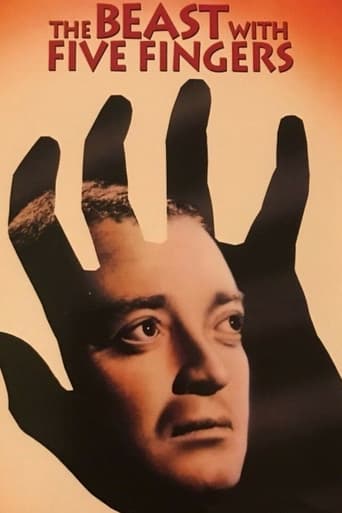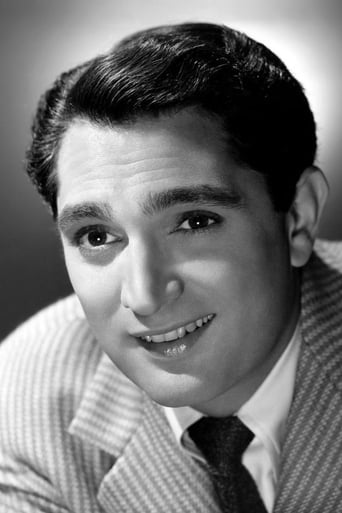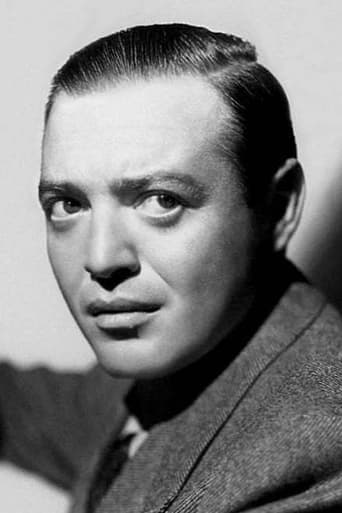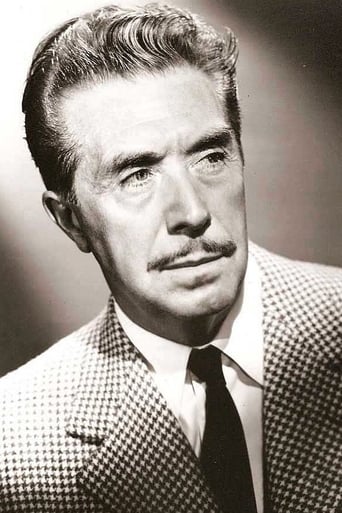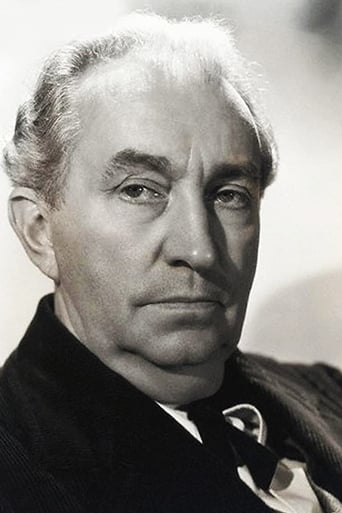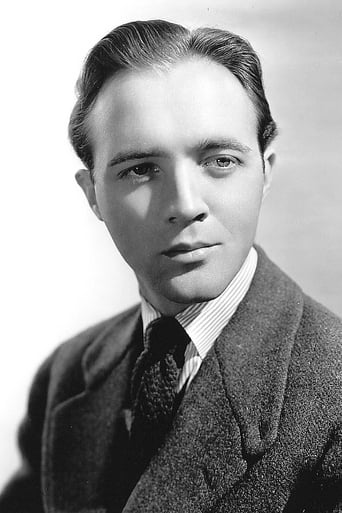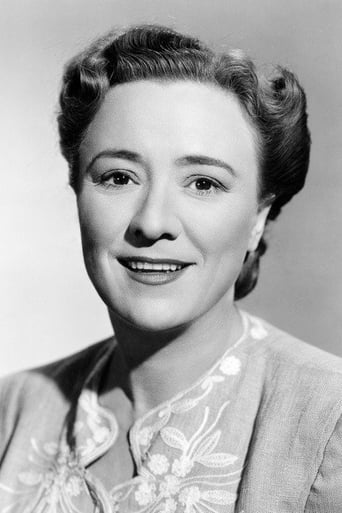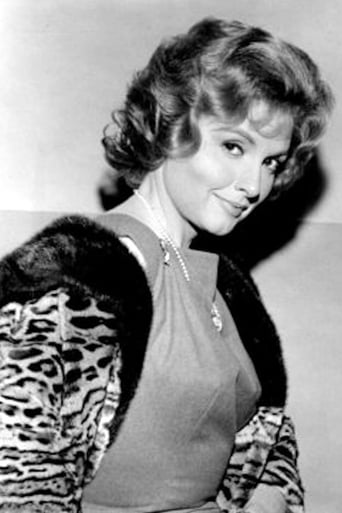Locals in an Italian village believe evil has taken over the estate of a recently deceased pianist where murder has taken place. The alleged killer: the pianist's severed hand.


Similar titles
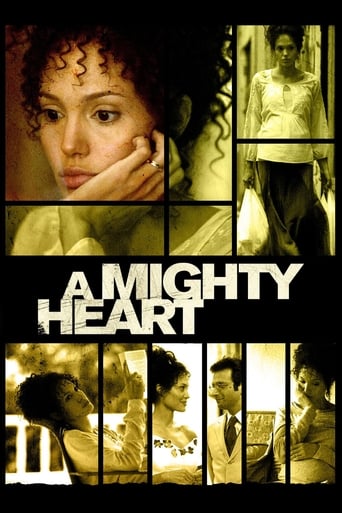




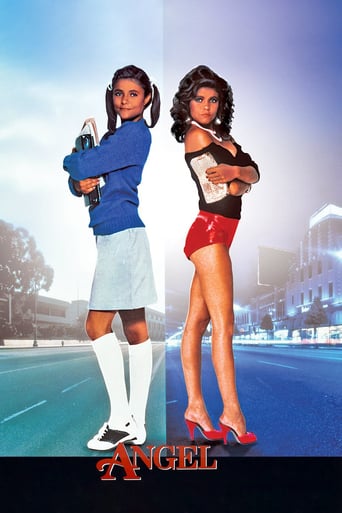
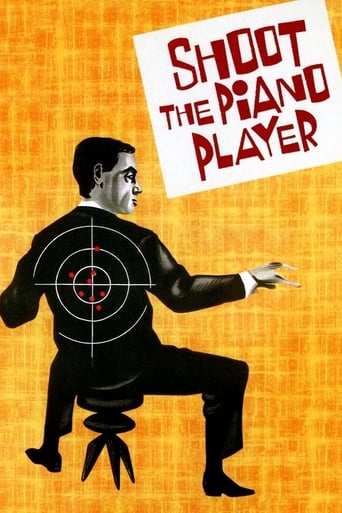
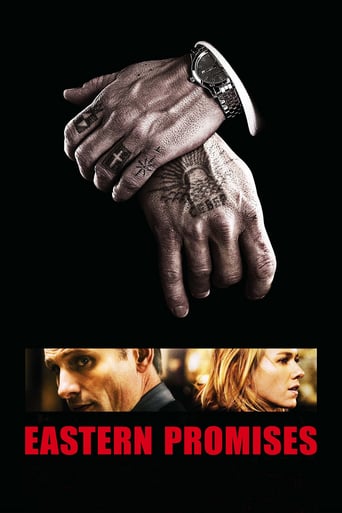
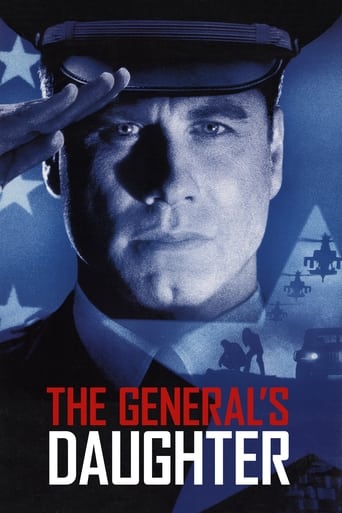
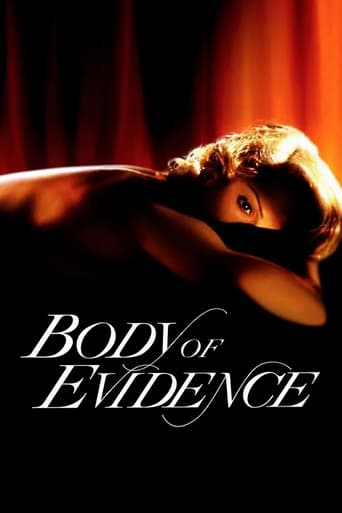
Reviews
(Contains mild spoilers) How a good mystery story with horror elements could evolve to a disappointing resolution, with J. Carrol Naish overacting as comic relief, and Andrea King and Peter Lorre wrestling with absurd scenes and dialogue, I cannot explain. The first and second acts contain a few of the best B&W images of the history of horror cinema that I can remember, especially all scenes involving the mad pianist played by Victor Francen until his magnificently staged death, or the moment when the Beast demands its ring to Lorre. With the exception of his avant garde silent films, I don't place the work of French director Robert Florey too high, but I must admit he made a remarkable job in this film, until the story began to turn into a tale of dementia. When the schizophrenic hallucination galore started, the movie fell into the trap of psychological melodrama and never recovered. Naish in his final scenes made it worse, unsuccessfully trying to make us laugh. Maybe it was studio interference as I have read, or maybe screenwriter Curt Siodmak did not delivered a very inspired script. But from the moment in the middle of the night when the dead pianist's young American relative runs terrified to the garden, followed by his father, the police commissioner and the leading man, the film sinks fast: inside the house King and Lorre go into an endless interplay, he threatens to kill her and the hand goes nuts over the piano, while no one comes back to the house. Although it has become a cult favorite, it is a pity that it did not turned into a winner because it had all the elements to be a genre classic.
Here's another Odd One. Starting with the Studio. In the Forties WB was certainly Not Known for Horror Movies and taking this on is somewhat of a Puzzle. After all, the Post War Years saw a more Mature Audience and the Horror Genre had seen its Better Days. "Abbot and Costello Meets Frankenstein" (1948) was to come shortly.Then there's that Goofy Title. It Conjures up all Kinds of Things that were Not to Be. It's just Clunky. The Premise and Execution were Ripe for Laughter and it is a Wonder the Movie Worked at all. But it did.Thanks mostly to Peter Lorre and Director Robert Florey's Atmospherics with some Help from Max Steiner's Score. The SFX are Unbelievably Believable. Folks who saw this one as Youngsters usually Say it Scared Them Under the Covers. The Tone is Ominous and Played Melodramatically Straight (until the last five minutes).There are Chills and Thrills if You get into it and the Film has a Gothic Creepiness. The Hand Shows some Gore and Manages to be Horrific at Times. Overall, Worth a Watch. May be a Bit Overrated but it is an Anomalous Film from the Studio in that Era. Different Enough to be sure and Stands Apart from its Contemporaries, what Few there were.
The Beast with Five Fingers is directed by Robert Florey and jointly written by Curt Siodmak and William Fryer Harvey. It stars Robert Alda, Andrea King, Peter Lorre, Victor Francen, J. Carrol Naish, Charles Dingle, John Alvin and David Haffman. Music is by Max Steiner and cinematography by Wesley Anderson. Francis Ingram (Francen) is a well regarded pianist who after suffering a stroke leaves him paralysed on one side, chooses to live at an isolated manor in rural Italy. After he calls family and carers together for the reading of his will, tragedy strikes and something sinister begins to stalk the manor house... Wonderfully weird, a blend of guignol, noir, expressionism and cheese, The Beast with Five Fingers delivers rich rewards for those not expecting a horror masterpiece. Following the classic "old dark house" formula, plot basically sees the characters introduced, their means and motives deliberately grey, tragedy strikes and then the titular beast of the title comes into play. Cue characters getting bumped off, some shouting, some eerie scenes and then the mystery solved. All of which is set to the backdrop of a typical mansion of many rooms and doors, an imposing staircase and of course a grand piano. Florey stitches it together neatly, Anderson provides some striking photography that embraces shadows and deals in odd angles, while Lorre does yet another film stealing performance involving twitchy weasel like mania. A stupid tacked on coda soils things a touch, and you really have to have a bent for this type of creaky chiller, but it is great fun and it "pointed" the way for other "beastly hand" tales that followed down the line. 7/10
This proved to be Warners' sole foray into the horror genre during the 1940s after a handful of variable efforts made in the previous decade (the John Barrymore vehicles SVENGALI and THE MAD GENIUS {both 1931}, the two-strip Technicolor showcases DOCTOR X {1932} and MYSTERY OF THE WAX MUSEUM {1933}, both featuring stalwarts Lionel Atwill and Fay Wray, and the black-and-white sequel THE RETURN OF DR. X {1939}, with an ill-at-ease Humphrey Bogart).Though third-billed after romantic leads Robert Alda and Andrea King, Peter Lorre was obviously the star here – his own third stab at the popular form, following MAD LOVE (1935; produced by MGM) and THE FACE BEHIND THE MASK (1941; a Columbia picture also directed by Florey), and to which he would briefly return towards the end of his career at AIP. Lorre, in fact, was a staple of Warner's typical noir-ish style of the era (in which THE BEAST WITH FIVE FINGERS itself is shot) – beginning with the classic THE MALTESE FALCON (1941) and continuing in his other films with either Humphrey Bogart or Sydney Greenstreet; actually, this was his only solo vehicle at that studio and, like the actor's earlier afore-mentioned genre turns, he not only carries it with aplomb but delivers a memorable performance.While the film is ideal Halloween fare (I watched a number of horror-related stuff throughout October in conjunction with my ongoing Luis Bunuel retrospective), it also forms part of that tribute to the Spanish Surrealist master because he claimed to have supplied Warners – while employed there during his American exile – with an idea for a motion picture about a rampaging disembodied hand, which they rejected at the time but eventually found itself on the screen anyway (though the story was attributed to somebody else)!; that said, he would have his revenge by 'appropriating' the device for himself – using it within a surreal context – for one of his major works i.e. THE EXTERMINATING ANGEL (1962), with the result being clearly much superior to its 'inspiration'! For the record, other 'appearances' of the titular 'monster' are to be found in: THE WITCH'S MIRROR (1960), a cult item emanating from Mexico; the low-budgeter THE CRAWLING HAND (1963); the Amicus horror compendium DR. TERROR'S HOUSE OF HORRORS (1965); the 1960s TV series and 1990s film versions of THE ADDAMS FAMILY; the Oliver Stone-Michael Caine dud THE HAND (1981); and, most recently, TRICK 'R TREAT (2007; which I have just watched).To get back to the subject at hand (no pun intended), the phoney European setting of THE BEAST WITH FIVE FINGERS seems to have been influenced by that seen in the second phase of Universal horrors; even so, a good deal of the action takes place inside a sprawling villa – which, ironically, not only looks back to the 'animated' mansion from the French Poe adaptation THE FALL OF THE HOUSE OF USHER (1928; on which Bunuel himself had served as Assistant Director) but forward to the endless spate of Mexi-Horrors often revolving around a gloomy hacienda (let's not forget that Bunuel spent almost 20 years rebuilding his film-making career in Mexico). Anyway, we get plenty of brooding atmosphere here – with the special effects dealing with the murderous limb being reasonably effective for their time; still, while the Max Steiner score was appropriately moody (particularly the main theme that, for plot purposes, recurs throughout), I was a bit distressed by how similar it sounded to the same composer's distinctive work on the Howard Hawks/Humphrey Bogart noir masterpiece THE BIG SLEEP which, though begun in 1944, was only released – after considerable re-shooting – just a few months prior to THE BEAST WITH FIVE FINGERS itself! The cast the of film under review also highlights J. Carroll Naish as the Police Commissioner of the traditionally superstitious Italian village and Victor Francen as the exacting crippled pianist (encouraged in his illusions by impoverished composer Alda, cared for by lovely nurse King – who, naturally, arouses jealousy between the two – and assisted in his affairs by scholar/secretary Lorre, though too often finding himself on the receiving end, both physically and psychologically, of the old man's uncontrolled fury). When King is revealed as Francen's heir – over his only living relatives – immediately before his death from a staircase fall, foul play is suspected and Naish is called in; however, dead-of-night piano-playing suggests the involvement of the supernatural and, sure enough, the pianist's hand is discovered missing from his coffin! Lorre is particularly tormented by the latter, but he eventually manages to nail it down and lock it away in Francen's safe; ultimately, though, the culprit for the various goings-on at the villa emerges to be no more than human – with the depredations of the creeping hand attributed to his unbalanced mind (this disappointingly conventional ending, then, is augmented by an even lamer gag in which Naish uncharacteristically jokes around with the audience about the improbability of such a tall tale occurring)! In conclusion, this came off rather better than I recalled (I had not watched it in a long time) – even if, as I already explained, its reputation as a minor genre classic mainly boils down to Lorre's presence and the distinctive Warners style.
